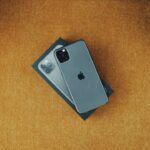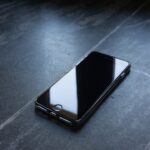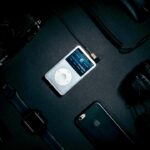An eSIM, or embedded SIM, is a digital version of the traditional SIM card that is built directly into a device’s hardware. Unlike conventional SIM cards, which are removable and require physical swapping to change carriers or plans, eSIMs are programmable and can be updated remotely. This technology allows users to switch between different mobile network operators without the need for a physical card, streamlining the process of managing mobile connectivity.
The eSIM is compliant with the GSMA (Groupe Speciale Mobile Association) specifications, which standardize how these embedded SIMs function across various devices and networks. The eSIM technology has gained traction in recent years, particularly as smartphones and other connected devices become increasingly compact and integrated. By eliminating the need for a physical SIM card slot, manufacturers can design sleeker devices with more space for other components, such as larger batteries or enhanced sensors.
The eSIM also supports multiple profiles, enabling users to store several carrier profiles on a single device. This feature is particularly beneficial for frequent travelers who may want to switch between local carriers while abroad without the hassle of changing physical SIM cards.
Key Takeaways
- An eSIM card is a digital SIM card that is embedded in a device and can be programmed with multiple mobile plans.
- The iPhone 13 has the capability to support two eSIM cards, allowing users to have dual SIM functionality.
- Advantages of using eSIM cards in the iPhone 13 include the ability to switch between carriers without physically swapping SIM cards and the convenience of having multiple phone numbers on one device.
- Disadvantages of using eSIM cards in the iPhone 13 may include limited carrier support and potential compatibility issues with older devices.
- Setting up eSIM cards on the iPhone 13 involves scanning a QR code or entering a confirmation code provided by the carrier.
How many eSIM cards are in the iPhone 13?
The iPhone 13 series, which includes the iPhone 13, iPhone 13 mini, iPhone 13 Pro, and iPhone 13 Pro Max, supports dual SIM functionality through the combination of a physical nano-SIM card and an eSIM. This means that each device can accommodate one physical SIM card alongside one eSIM profile. Users can take advantage of this dual SIM capability to manage personal and work numbers on a single device or to utilize different data plans while traveling internationally.
In practical terms, this means that while there is only one eSIM profile available per iPhone 13 device, users can switch between multiple eSIM profiles if they have them stored on their device. Apple allows users to store multiple eSIM profiles, but only one can be active at any given time. This flexibility is particularly useful for those who may want to switch between different carriers or plans without needing to physically change a SIM card.
Advantages of using eSIM cards in the iPhone 13

One of the primary advantages of using eSIM cards in the iPhone 13 is the convenience they offer. Users can activate a new mobile plan without needing to visit a store or wait for a physical SIM card to arrive by mail. This ease of activation is especially beneficial for travelers who may need to quickly switch to a local carrier upon arrival in a new country.
With just a few taps on their device, users can scan a QR code provided by their carrier or enter activation details manually, making the process seamless and efficient. Another significant advantage is the ability to manage multiple phone numbers on a single device. The dual SIM capability of the iPhone 13 allows users to maintain both personal and work numbers without carrying two separate phones.
This feature is particularly appealing for professionals who want to keep their work and personal communications separate while still having access to both lines at all times. Additionally, users can take advantage of different data plans, allowing them to choose the most cost-effective option based on their usage patterns.
Disadvantages of using eSIM cards in the iPhone 13
| Disadvantages of using eSIM cards in the iPhone 13 |
|---|
| 1. Limited carrier support |
| 2. Incompatibility with some older devices |
| 3. Potential difficulty in switching devices |
| 4. Reliance on network availability for activation |
| 5. Security concerns with remote SIM provisioning |
Despite the numerous advantages of eSIM technology, there are also some disadvantages associated with its use in the iPhone 13. One notable drawback is that not all carriers support eSIM functionality, which can limit options for users depending on their location and service provider. While major carriers in many countries have adopted eSIM technology, smaller or regional providers may not offer this service, potentially forcing users to stick with traditional SIM cards if they wish to use those networks.
Another disadvantage is related to the complexity of managing multiple profiles. While having multiple eSIM profiles stored on a device can be convenient, it can also lead to confusion for some users. Switching between profiles requires navigating through settings menus, which may not be intuitive for everyone.
Additionally, if a user encounters issues with their eSIM profile—such as connectivity problems or account disputes—resolving these issues may require contacting customer support, which can be time-consuming and frustrating.
How to set up eSIM cards on the iPhone 13
Setting up an eSIM on the iPhone 13 is a straightforward process that can be completed in just a few steps. First, users need to obtain an eSIM activation card from their carrier, which typically includes a QR code or activation details. Once they have this information, they can begin the setup process by navigating to the “Settings” app on their iPhone.
From there, they should select “Cellular” or “Mobile Data,” followed by “Add Cellular Plan.” After selecting “Add Cellular Plan,” users will be prompted to scan the QR code provided by their carrier using their iPhone’s camera. If they do not have a QR code but have received manual activation details instead, they can choose the option to enter these details manually. Once the eSIM profile is successfully added, users will have the option to label their plans (e.g., “Personal” or “Work”) for easier identification.
Finally, they can select which plan they want to use as their default line for calls and messages.
Compatibility of eSIM cards with different carriers

The compatibility of eSIM cards with various carriers is an essential consideration for users looking to take full advantage of this technology on their iPhone 13. While many major carriers around the world support eSIM functionality—such as AT&T, Verizon, T-Mobile in the United States, and Vodafone and EE in the UK—there are still regions where support may be limited or non-existent. Users should check with their specific carrier to confirm whether they offer eSIM services before making any decisions.
In addition to carrier support, it’s important for users to understand that not all plans offered by a carrier may be available for eSIM activation. Some carriers may restrict certain prepaid or promotional plans from being activated via eSIM, which could affect users’ choices when selecting a mobile plan. Furthermore, if users travel frequently or plan to switch carriers often, they should ensure that their chosen carrier has robust international roaming agreements and support for eSIM activation in other countries.
Security concerns with eSIM cards in the iPhone 13
While eSIM technology offers several advantages over traditional SIM cards, it also raises certain security concerns that users should be aware of when using an iPhone 13. One potential issue is related to remote provisioning; since eSIM profiles can be activated and managed over-the-air, there is a risk that unauthorized individuals could gain access to a user’s account if proper security measures are not in place. This could lead to scenarios where someone could potentially switch a user’s mobile plan without their consent.
To mitigate these risks, it is crucial for users to enable additional security features on their devices, such as two-factor authentication (2FA) for their carrier accounts and strong passwords for their Apple ID and other associated accounts. Additionally, users should be cautious about sharing their QR codes or activation details with others, as these could be exploited if they fall into the wrong hands. Overall, while eSIM technology provides convenience and flexibility, it is essential for users to remain vigilant about security practices.
Future of eSIM technology in smartphones
The future of eSIM technology in smartphones appears promising as more manufacturers and carriers adopt this innovative approach to mobile connectivity. As consumer demand for seamless connectivity continues to grow, it is likely that we will see an increasing number of devices equipped with embedded SIM capabilities. This trend could lead to further advancements in mobile technology, such as improved network performance and enhanced user experiences.
Moreover, as IoT (Internet of Things) devices proliferate—ranging from smartwatches to connected cars—the need for efficient and flexible connectivity solutions will become even more critical. eSIM technology is well-suited for these applications due to its ability to support multiple profiles and remote provisioning capabilities. As industries continue to explore new use cases for connected devices, eSIMs will likely play a central role in shaping the future landscape of mobile communication and connectivity solutions across various sectors.
If you are curious about how many eSIM cards are in the iPhone 13, you may want to check out this informative article on GetiPhoneInfo. This website provides detailed information about the latest iPhone models, including the number of eSIM cards supported by each device. By visiting their website, you can stay up to date on all the latest iPhone news and features.
FAQs
What is an eSIM card?
An eSIM card, or embedded SIM card, is a digital SIM card that is embedded directly into a device, such as a smartphone or tablet, and does not require a physical SIM card to be inserted.
How many eSIM cards are in iPhone 13?
The iPhone 13 models, including the iPhone 13, iPhone 13 mini, iPhone 13 Pro, and iPhone 13 Pro Max, all support dual SIM with one physical SIM card and one eSIM.
Can I use multiple eSIM cards in iPhone 13?
No, the iPhone 13 models only support one eSIM card in addition to the physical SIM card. You cannot use multiple eSIM cards simultaneously in an iPhone 13.
How do I activate an eSIM card on iPhone 13?
To activate an eSIM card on iPhone 13, you will need to contact your mobile carrier and follow their specific instructions for activating an eSIM. This typically involves scanning a QR code or entering a provided activation code.
Can I switch between eSIM cards on iPhone 13?
Yes, you can switch between eSIM cards on iPhone 13 by deactivating the current eSIM and activating a new one through your mobile carrier. Keep in mind that you can only have one eSIM active at a time.










